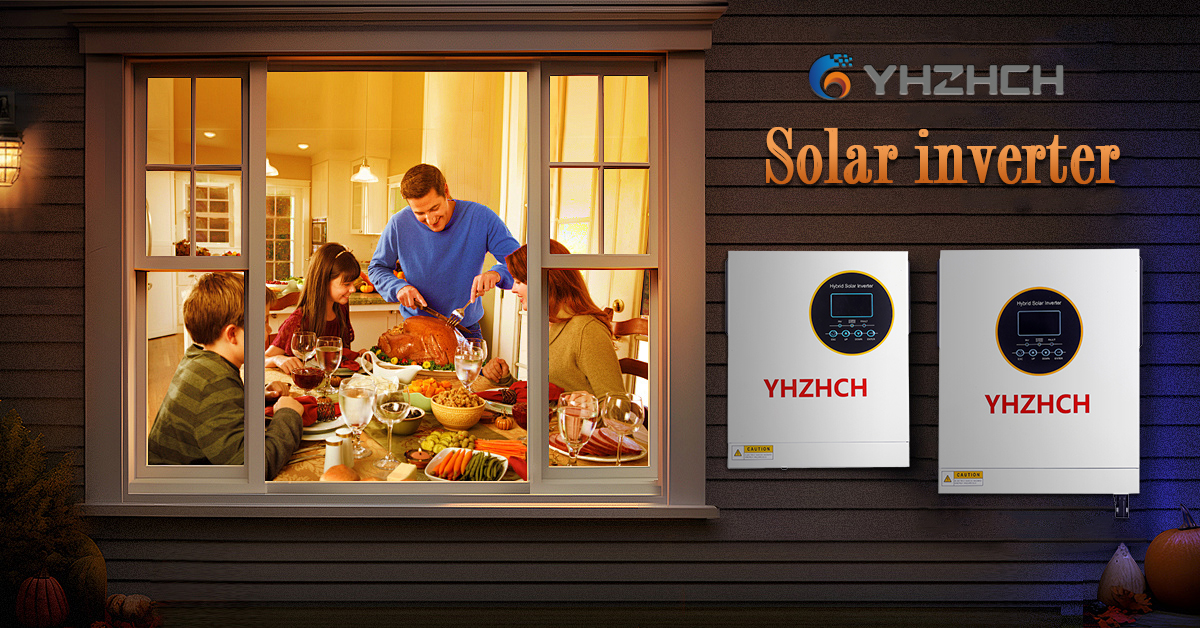
To determine whether the maintenance and upkeep of the cooling measures for solar inverters are in place, a comprehensive evaluation should be conducted from multiple dimensions, including temperature monitoring data, cooling component status, system operation performance, and maintenance records. The following are specific judgment methods and standards:
1、 Temperature monitoring: validation of core indicators for heat dissipation efficiency
1. Temperature detection of key parts
Detection tools: infrared thermometer, built-in temperature sensor data of inverter (read through monitoring software).
Judgment criteria:
Power devices (such as IGBT, MOSFET): The temperature should be lower than the manufacturer's rated value (usually ≤ 80 ℃, subject to the instructions), and the temperature rise amplitude should be ≤ 5 ℃ when compared with historical data under the same operating conditions.
Surface of heat sink: The temperature difference between the inlet and outlet of the heat sink in the air-cooled system should be ≥ 10 ℃, and in the liquid cooling system it should be ≥ 5 ℃; If the temperature difference is too small, there may be dust accumulation on the heat sink, decreased fan efficiency, or insufficient liquid flow.
2. Temperature fluctuations and alarm frequency
Observe whether the inverter frequently triggers overheating alarms or reduces power during operation:
2、 Thermal component status check: hardware operation reliability
1. Passive cooling system (heat sink, thermal conductive material)
Heat sink:
Cleanliness: There is no obvious dust, oil stains, or insect corpses on the surface, and the gaps between the fins are unobstructed (with good transparency).
Physical integrity: No deformation, fracture, or corrosion (such as no oxidation black spots on aluminum sheets and no green rust on copper sheets), and salt spray corrosion should be inspected in coastal areas.
Thermal conductive silicone grease/gasket:
There is no obvious gap between the power device and the heat sink, and the silicone grease does not dry or crack (it forms a uniform paste when squeezed, not a powder).
2. Active cooling system (fan, liquid cooling)
Air cooling system:
Fan: There is no abnormal noise during operation (such as friction sound, whistling), and the speed matches the temperature control logic (the fan accelerates when the temperature rises, and the speed decreases after cooling).
Liquid cooling system:
Liquid state: Ethylene glycol solution without turbidity or stratification, conductivity<5 μ S/cm (measured with a tester), freezing point consistent with local climate (such as ≤ -30 ℃ in northern regions).
3. Phase change materials (PCM)
The surface temperature of the module is uniform and there are no local overheating protrusions; The pressing module has no obvious softening or hardening area (normal state is solid but has some flexibility).
3、 System performance: Actual functional verification
1. Effectiveness of heat dissipation logic
Temperature control response: artificially simulate temperature rise (such as briefly increasing load), observe whether the cooling system starts according to the design:
Redundancy design verification: For multi fan or dual loop liquid cooling systems, a set of cooling components can be manually turned off to observe whether the system can maintain normal temperature through redundant configuration (under the guidance of the manufacturer to avoid damaging the equipment).
2. Energy efficiency and power generation
4、 Compare maintenance records with historical data
1. Maintain compliance with the maintenance cycle
Check whether the maintenance records comply with the manufacturer's recommended cycle:
Is the fan of the air cooling system cleaned every 3-6 months, and is the liquid cooling system changed every 2-3 years.
Whether the replacement of thermal grease and inspection of phase change materials have been carried out within the prescribed period.
2. Component replacement and failure frequency
Calculate the replacement frequency of heat dissipation related components (such as fans, sealing rings, and thermal grease):
If the replacement cycle of a certain component is significantly shorter than expected (such as replacing a fan every year), it is necessary to investigate whether premature wear and tear is caused by insufficient maintenance (such as lack of oil, dust accumulation, and jamming).
Comparing the number of failures before and after maintenance, if the number of overheating related failures decreases by more than 80%, it indicates effective maintenance.
5、 Environmental adaptability assessment
1. Performance in different scenarios
2. Special environmental inspection
6、 Professional tools assist in diagnosis
1. Scanning with thermal imaging instrument
Perform thermal imaging scanning inside the inverter, and the normal cooling system should present a uniform temperature distribution without obvious hotspots (areas with a temperature difference greater than 15 ℃).
2. Pressure testing of liquid cooling system
Use a pressure tester to apply the rated pressure (such as 1.5 times the working pressure specified by the manufacturer) to the liquid cooling pipeline, maintain the pressure for 30 minutes, and a pressure drop of ≤ 5% is considered qualified. Otherwise, there may be leakage points.
7、 Comprehensive judgment process
Data screening: By using monitoring software to view recent temperature curves and alarm records, a preliminary judgment can be made on whether there is an overheating trend.
On site inspection: Disassemble and observe the cleanliness and physical condition of the cooling components, test key temperature points and component performance.
Function verification: Simulate load changes, observe the response speed and temperature control effect of the cooling system.
Historical comparison: Analyze the differences in data before and after maintenance, and evaluate the effectiveness of maintenance measures.
Expert evaluation: If it is difficult to make a self judgment, you can contact the manufacturer or third-party testing agency for professional thermal performance testing (such as heat flow analysis, heat dissipation simulation).
By using the above methods, it is possible to comprehensively and scientifically determine whether the cooling maintenance of solar inverters is in place, promptly identify potential problems, and optimize maintenance strategies to ensure long-term stable operation of the equipment.


